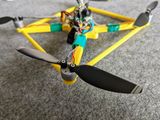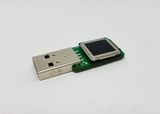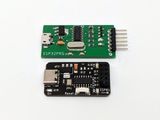From Social Network User to Creator: My Journey to Building My Own Instagram (and Twitter)
Tired of posting to Instagram or Facebook and having it disappear into the void? Yeah, me too. So I built my own tiny tool to share images the way I want—simple, public, and fully under my control. It’s called Telepico, and it only took a few evenings to set up. Check it out!
The 3D printed FPV quad
Built a budget quadcopter for just 57€ (excluding frame and battery), and yes—it actually flies great. I 3D printed the frame, sourced cheap parts, and ended up with a 77g FPV drone that gets around 14 minutes of flight time. Check out the video and full build details inside!
FIDO2 Authenticator - USB Dongle
After a long break, I’m back working on my FIDO2 authenticator! With BLE dropped from Chrome, I’ve shifted gears to USB—and that meant switching from ESP32 to STM32 (and soon RP2040). The latest prototype features a fingerprint scanner, secure element, and a fresh USB PCB. Still lots to build, but it’s moving again!
Use docker secrets in Django application
Deploying Django on Docker Swarm? I needed a way to securely handle secrets, so I used Docker’s built-in secret management and added a simple helper in settings.py. Works great for both dev and production—no more hardcoding secret keys!
Can ESP01 be used as a receiver for the drone?
Turns out you can program a dirt-cheap ESP01 module to act like an iBus receiver for a flight controller. I threw together a quick sketch to send random channel data—and yep, Betaflight picked it up! It’s just a prototype, but this could be a fun path toward building a Wi-Fi-based RC setup.
CH340G programmer for ESP8266/ESP32 - updated version
So, I have returned to my last year’s design of the CH340G based programmer and upgraded it with the same pinout as the widely known ESP01 module for the better compatibility and the USB Type C receptacle. Nowadays connectors of this type are way more popular than outdated Micro USB ones.
URU Card devices for sale
A lot of people asked if they can buy the URU Card—so I built one more, opened a little Tindie store, and… it sold out instantly. I’ll build more in small batches, so if you’re interested, just hit the watchlist and let me know your PCB color preference. No Kickstarter (yet), just a hobby!






